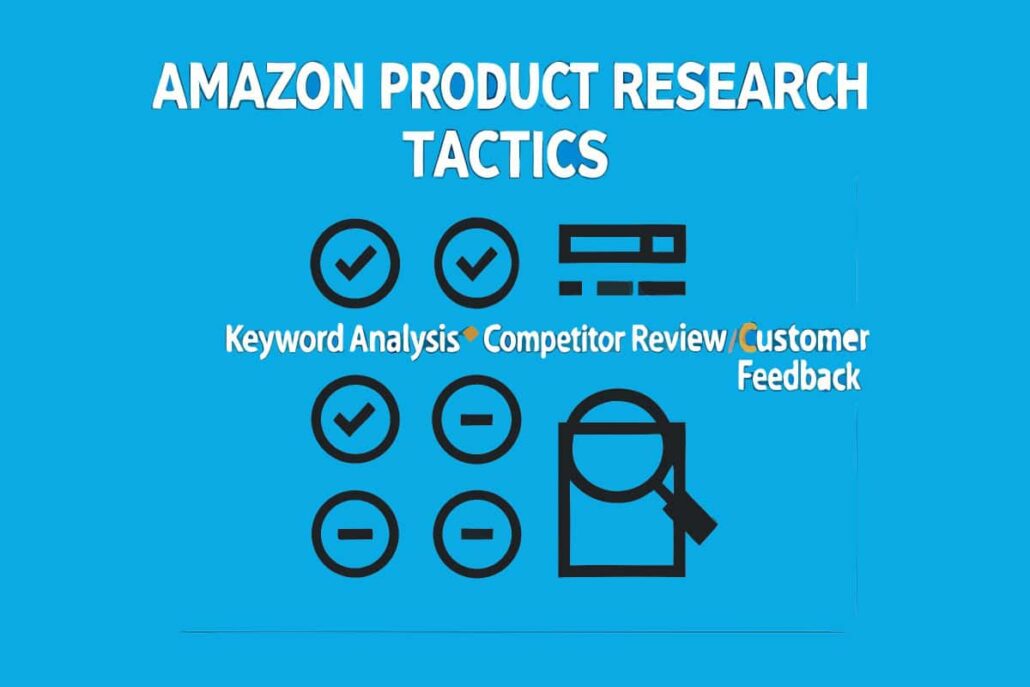
Finding profitable products on Amazon can feel like searching for a needle in a haystack. With more than 350 million listings and new sellers joining every day, the marketplace is packed and fast-moving. The line between winning and losing often comes down to one simple thing: solid product research.
Amazon Product Research Tactics
Savvy Amazon entrepreneurs steer clear of blind guessing. Instead, they lean on tried-and-true methods that spotlight high-demand, low-competition items likely to turn a steady profit. This guide shares eleven hands-on tactics those thriving sellers rely on, so you can spot winning products and grow your own store.
Understanding Amazon Product Research Fundamentals
Before jumping into the nuts and bolts, it helps to know what separates a good product from a flop on Amazon. The best offerings usually boast four traits: steady demand, manageable competition, nice profit margins, and room to grow.
Basic research means digging through market numbers, watching competitors, and listening to customer habits until clear opportunities appear. You ll need a mix of math smarts and outside-the-box thinking, plus a pinch of patience. The aim is not just any item that shifts a few units, but a line that fits your budget, skills, and long-term goals.
Tactic 1: Analyze Amazon’s Best Seller Lists
The Best Sellers page on Amazon is like a live scoreboard for what shoppers want right now. Because the list refreshes every hour, you can see which products are winning hearts and wallets across every possible category.
Start with categories that match your hobbies or expertise. Spotlight items that stay near the top for days or even weeks; that steady rise shows lasting demand, not just a brief flash in the pan. While you browse, take notes on pricing, standout features, and the buzz in customer reviews.
The list also whispers about seasons and new niches. An item shooting up the ranks today could be tomorrow’s hot holiday gift, while a steady favorite shows there will be buyers tomorrow, next month, and next year.
Tactic 2: Leverage Amazon’s Movers and Shakers
Movers and Shakers shines a spotlight on products that jumped up the sales charts the day before. Watching this box lets you spot fresh best-sellers so early that your store can win attention before the market gets crowded.
Tip 1: Track Rising Items in Your Niche
Keep an eye on products creeping up the sales rank for the categories you watch. Dig into the rise and ask if its linked to a seasonal spike, a viral TikTok moment, or because the item really fixes a problem customers face.
Once you find a contender, check past data to see whether the jump looks like a quick blip or the start of steady growth. Items that keep climbing are usually safer bets for the long haul.
Tip 2: Map What Rivals Are Selling
Top Amazon sellers dont stick to one hit; they build a portfolio of winners. By studying their whole lineup, you can spot gaps in the market and learn what kinds of products stick.
First, find the best-selling shops in your target space and browse their pages. Look for patterns in what they sell, how they price it, and the messaging they use. Those clues often point to profitable niches and solid formulas.
Also, keep tabs on their latest launches and watch how they fade or hold strong. Successful sellers tend to test ideas on a small scale before going all-in, so their timing and experiment cycle can teach you when and how to release your own product.
Tactic 4: Use Amazons Product Opportunity Explorer
Amazons Product Opportunity Explorer, found in Seller Central, gives you clear, numbers-based insights into how shoppers search and what gaps still exist. The tool breaks down each keyword, showing its search volume, how much competition there is, and even the main customer groups looking for it.
One of its best features is the list of keywords that get a lot of searches but have few products competing. These blank spots are perfect chances to launch something new or step into a category where your brand can shine. The Explorer also points out search phrases that current listings just arent answering well yet.
To dig deeper, use the geographic and demographic filters so you can spot trends in specific regions or among groups that are often overlooked. With this targeted data in hand, you can adjust your products and marketing to meet the real needs of those customers.
Tactic 5: Monitor Social Media and Online Communities
Social media and online chat rooms usually catch new trends long before they hit Amazons search charts. Platforms like Reddit, Facebook groups, TikTok, and Instagram often show rising product ideas several weeks-or even months-ahead of the curve.
Join the groups where your future buyers gather and simply listen to what they say about products they love or hate. Look for problems they keep mentioning that the current market has ignored. Those honest talks can point you to small tweaks, big upgrades, or whole new items that people are ready to grab.
There is nothing quite like a viral meme or hashtag to turn a slow-moving product into an overnight sensation. While that spike is usually brief, it sometimes points to a bigger change in what shoppers want and can be worth a closer look.
Tactic 6: Analyze Customer Reviews for Market Gaps
Customer reviews are packed with details about what people like, what bugs them, and what they still wish a product could do. By reading feedback on several competing items in the same category, you can spot areas where the market is clearly asking for more.
Focus first on the common complaints that show up again and again, no matter the brand. Those repeating issues signal a gap that a new product might fill. Also note features shoppers consistently hope for but do not find in what is already on the shelf.
On the flip side, glowing reviews reveal the traits customers value the most. Grasping these winning features can guide you as you sketch out the must-haves for your own launch.
Tactic 7: Utilize Third-Party Research Tools
Of course, sifting through reviews and sales numbers by hand takes time, and the bigger the market, the blurrier the picture can become. That is where expert tools come in. Services like Jungle Scout, Helium 10, and Viral Launch pull together huge piles of Amazon data and present it in easy-to-read graphs and reports.
These platforms can give you rough monthly sales totals, show how a competitors rank has changed, and even highlight keywords nobody is thinking about yet. Because they keep a historical record, they also let you chart seasonal peaks and see whether a trend is likely to fade or stick around.
Even though good research tools cost money, they can speed up your work and give cleaner data than spreadsheets ever will. Pick software that matches both your budget and the questions you are trying to answer.
Tactic 8: Explore International Amazon Markets
Amazon has storefronts in dozens of countries, and each one behaves a bit differently. Something that flies off the shelf in Germany might barely move at home, and a quiet product here could be a best-seller across the ocean.
Dig into each culture, check the rules, and size up the local competition before jumping in. Youll find some items meet less fighting abroad, which opens a path for either fresh sales or safer test drives.
Shipping costs, import taxes, and everyday buyer habits matter, so add them to your checklist. Start with nations that speak the same language or share core customs; that way you dodge most early headaches.
Tactic 9: Track Seasonal and Holiday Trends
AMazons traffic is rarely steady; sales ebb and flow with the seasons, school calendars, and major holidays. Knowing these waves lets you stock smart, run ads on time, and seize a rush instead of chasing it.
Tap Google Trends to spot when people start searching for categories like toys, tools, or travel gear. Then match that peak with older AMazon numbers; together theyll sketch a rough drumbeat for future demand.
Plan product launches and stock purchases around seasonal patterns. Products that sell very well during certain times can be really profitable if you enter the market right on cue.
Tactic 10: Dig into Nearby Product Categories
Many shoppers who buy one item usually pick up something else that fits. By looking at these patterns, you can spot smart bundles and cross-sell chances.
Check the section of products customers bought together and see what appears in Amazons customers-also-viewed box. Those links often show gaps where a bundle or an add-on could live.
Think about moving into nearby groups that the same shoppers visit. Doing this uses what you already know while spreading out your lineup.
Tactic 11: Watch Patent Timelines and Rule Changes
When a patent runs out, space opens for newcomers; rule shifts can boost or sink demand. Keeping track of both lets you catch fresh chances as they pop up.
Look up patents tied to your target lines and note when they drop. Once they do, the field usually welcomes new players with clever twists.
At the same time, new rules might spark need for compliant items or wipe whole lines off the shelf. Keep an eye on the rules that matter in your markets.
Turning Research into Action
Product research is useful only when it helps you make clear choices. Once you spot a new idea, back it up with extra data and test it on a small scale before you go all-in.
Before moving forward, think about the time, money, skills, and appetite for risk your team can bring to the table. A winning concept for one business might be a gamble for another.
Begin by listing every cost tied to creating the product, from design and manufacturing to marketing and shipping. Check that the idea meets your profit goals and fits your overall plan.
Building Your Amazon Success Strategy
Winning on Amazon calls for steady effort and a willingness to learn every day. Trends shift fast, so a strategy that shines this month may fade by next.
Set up simple routines to track sales pages, read reviews, and spot fresh gaps in the market. No single tool tells the whole story, but a mix of data, surveys, and competitor checks paints a clearer picture.
Stay curious and ready to pivot. Many top sellers began as small tweaks to problems no one else seemed to notice. By combining a clear process with an open mind, you increase the odds of catching that next hidden diamond.
Product research isn-t something you do once and then forget about. The top Amazon sellers keep an eye on what-s trending, watch their rivals, and look for fresh ways to grow their stores.

